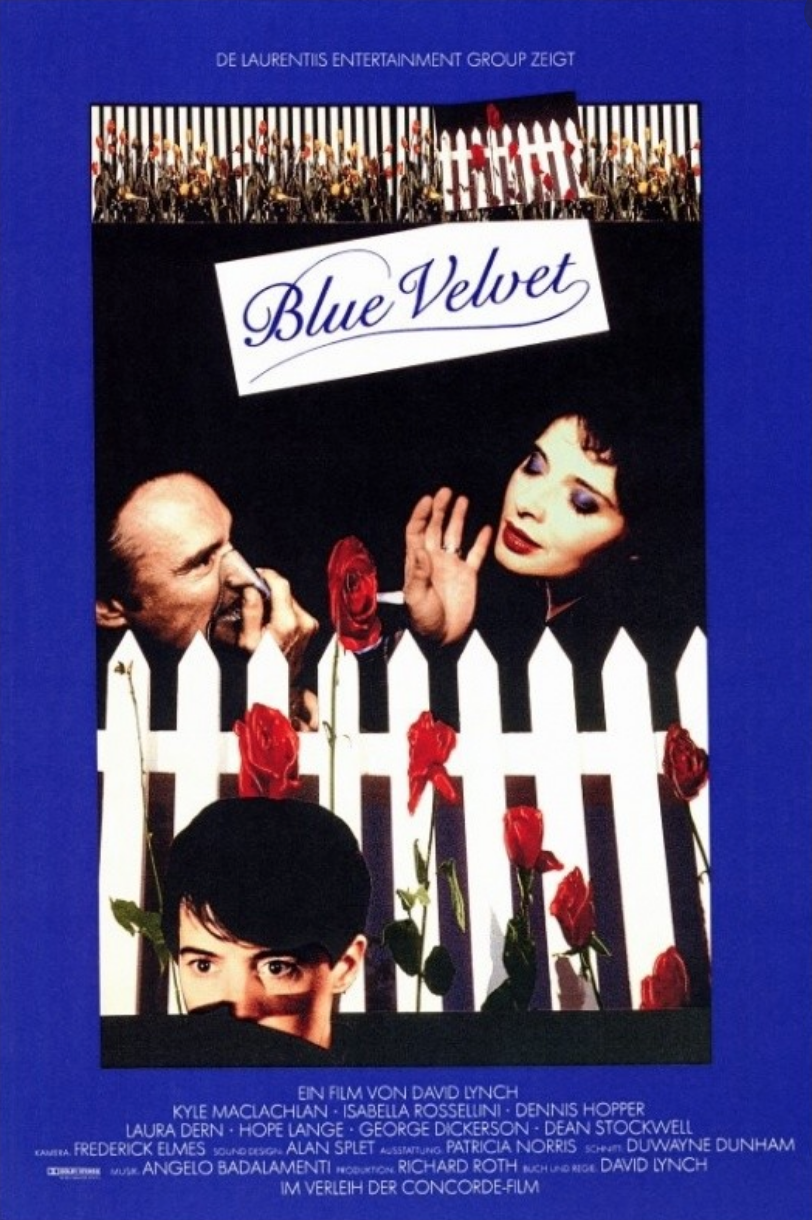
A movie poster for David Lynch’s horror film ‘Blue Velvet’.
By Haley Bassett, October 8th 2020
Dear reader, don’t let the title scare you off. This week I decided to share a helpful nugget I learned about in art school that has had a major impact on my artistic process and outlook on life: semiotics. This article will serve as a very brief introduction to semiotics, or the study of signs, and the production of meaning. In a second article, I will showcase artist Peter von Tiesenhausen’s ongoing project Lifeline as an example of this concept.
Having a basic understanding of semiotics is highly useful for artists who hope to guide viewers to a specific meaning in their work. It is important for them to understand the baggage that their symbols carry in order for their work to have a coherent symbolism. The study of signs is also helpful for anyone who wishes to understand how and why art, and its ugly cousin media, affect us.
Semiotics was developed by linguist Ferdinand de Saussure as well as philosopher Charles Sanders Peirce. It is a subject commonly studied in the arts and humanities, and unabashedly weaponized in the field of marketing. It is useful for all artistic production and appreciation. Its principles are something we understand implicitly, as we are all fluent in the language of signs. Its purpose, however, is to chart the systems and mechanisms behind our complex associations with signs that produce meaning.
Now, what is a sign? A sign is a visual, a scent, a sound, a word or a feeling; basically anything that can be perceived, with which we associate meaning. A sign is a whole, a combination of the signifier and the signified.

The signifier is the form that the sign takes, such as a tree. The signified is the meanings, or emotions, that we attach to the signifier. Following the example of a tree, its signified meanings could be nature, habitat, resource and so on.

A signifier alone carries no inherent meaning. For example, a minor chord in a song is not “sad” per se, but we associate its sound with sadness. The signifier of a minor chord only becomes a sign when it is combined with its signified associated meaning of sadness. Whether we understand this sequence of associations or not, we are still emotionally affected by the minor chord when we hear it.
Artists can choose to embrace, subvert or obscure those meanings to amplify the impact of their work. As an example, filmmaker David Lynch often uses suburban America as the setting in his horror films, such as Blue Velvet. By subverting our associations with suburbia and leveraging their emotional baggage, such as white fences, idyllic homes and happy nuclear families, his films become all the more unnerving and terrifying.
A prime example of semiotics in marketing is the medication ad. Predictably, side effects are listed in reassuring tones over a montage of active and thriving seniors that denotes happiness, health and vitality. The angelic lighting and saturated colours paired with these visuals and their associated desires is far more captivating than drab words like, “risk of suicide”, and “erectile dysfunction”, which is what makes these ads so effective.
You don’t need to be an expert on Saussure to implement these ideas in your art practice or daily life. All that is required of you as a consumer of media is that you check in regularly and ask yourself: what signs are being used, and what are they meant to convey?
Do you have an artistic endeavour you would like to promote? Is there a topic you would like me to discuss? I would love to hear from you! Please email me at programs@dcartgallery.ca.




